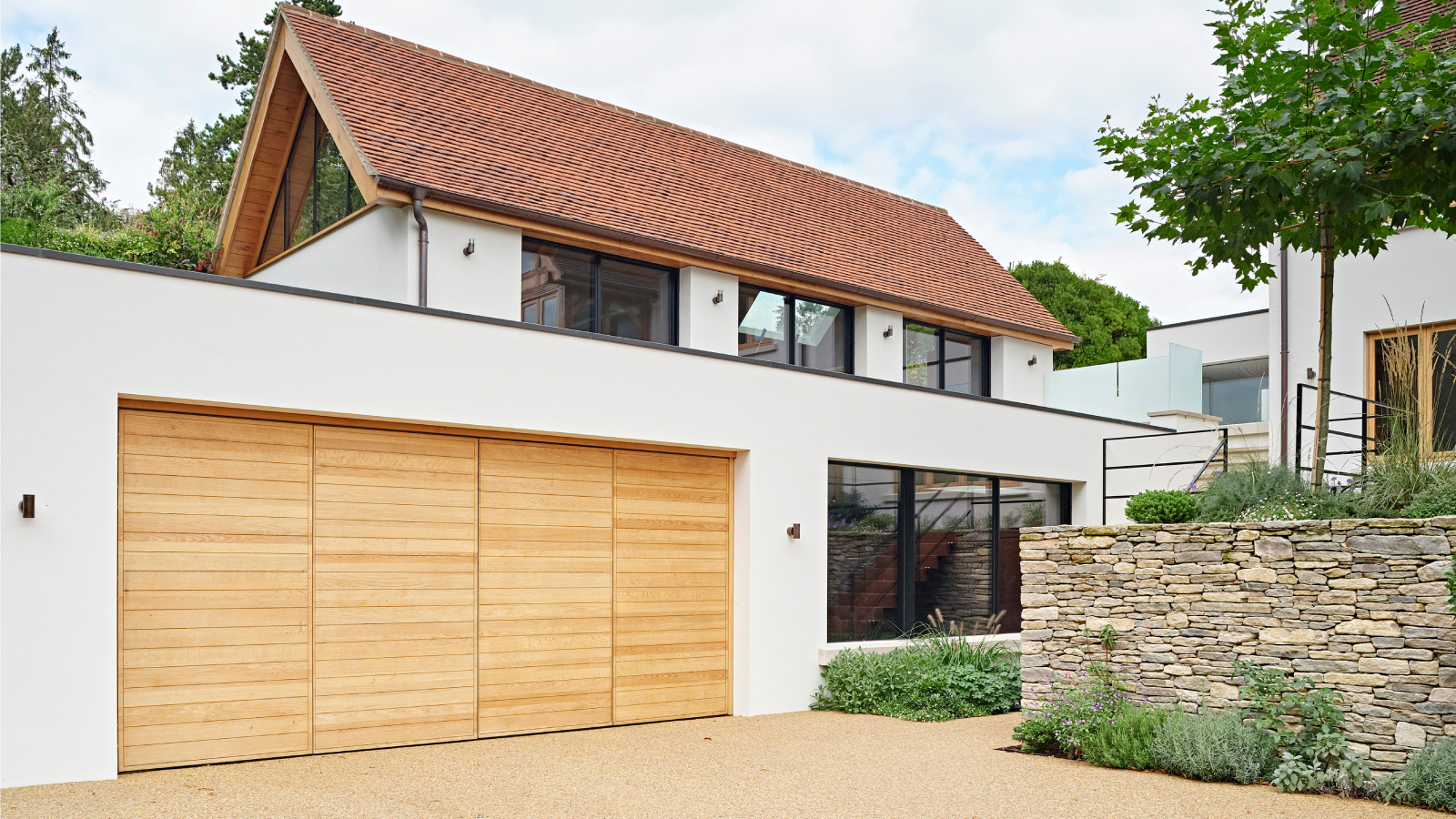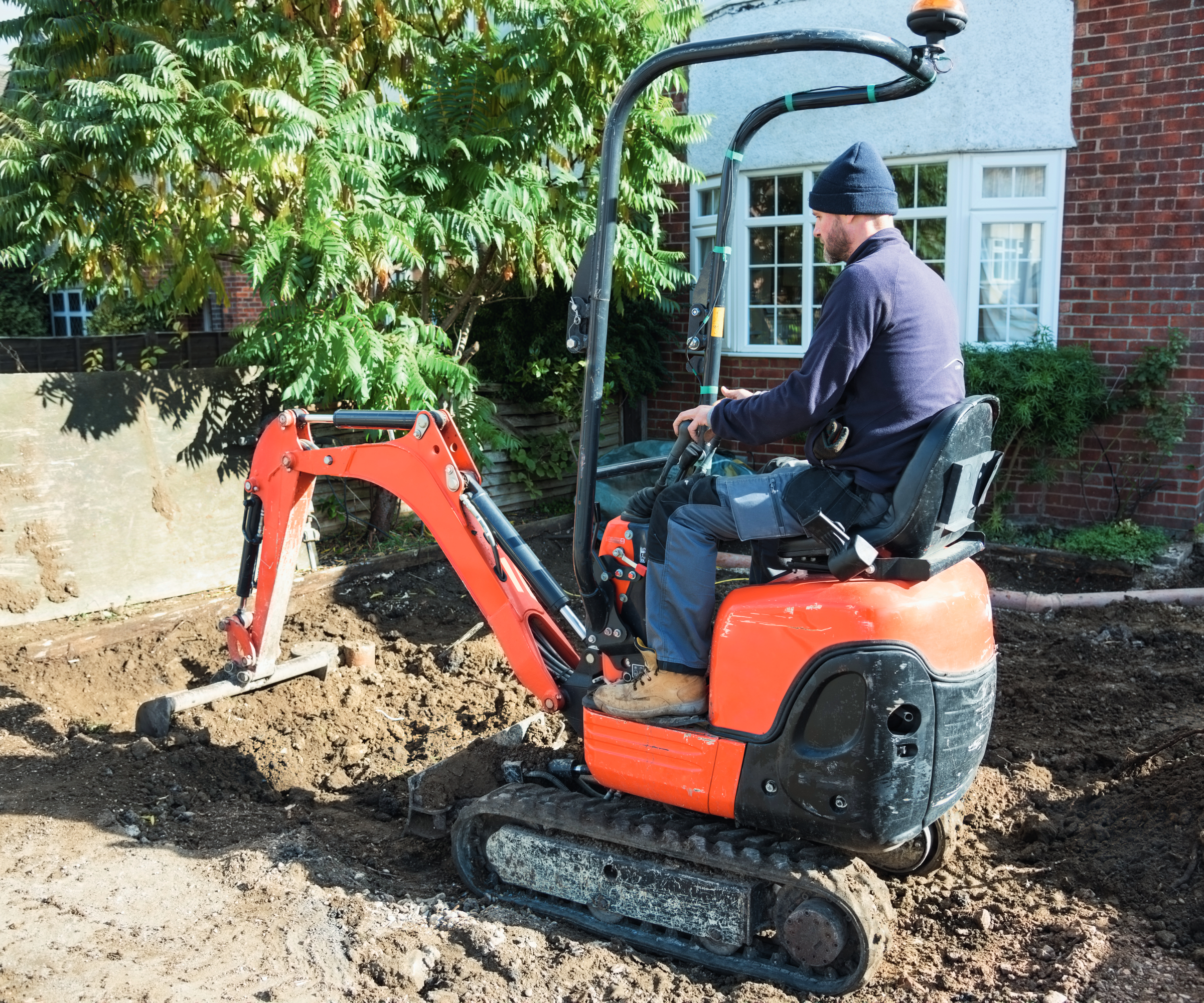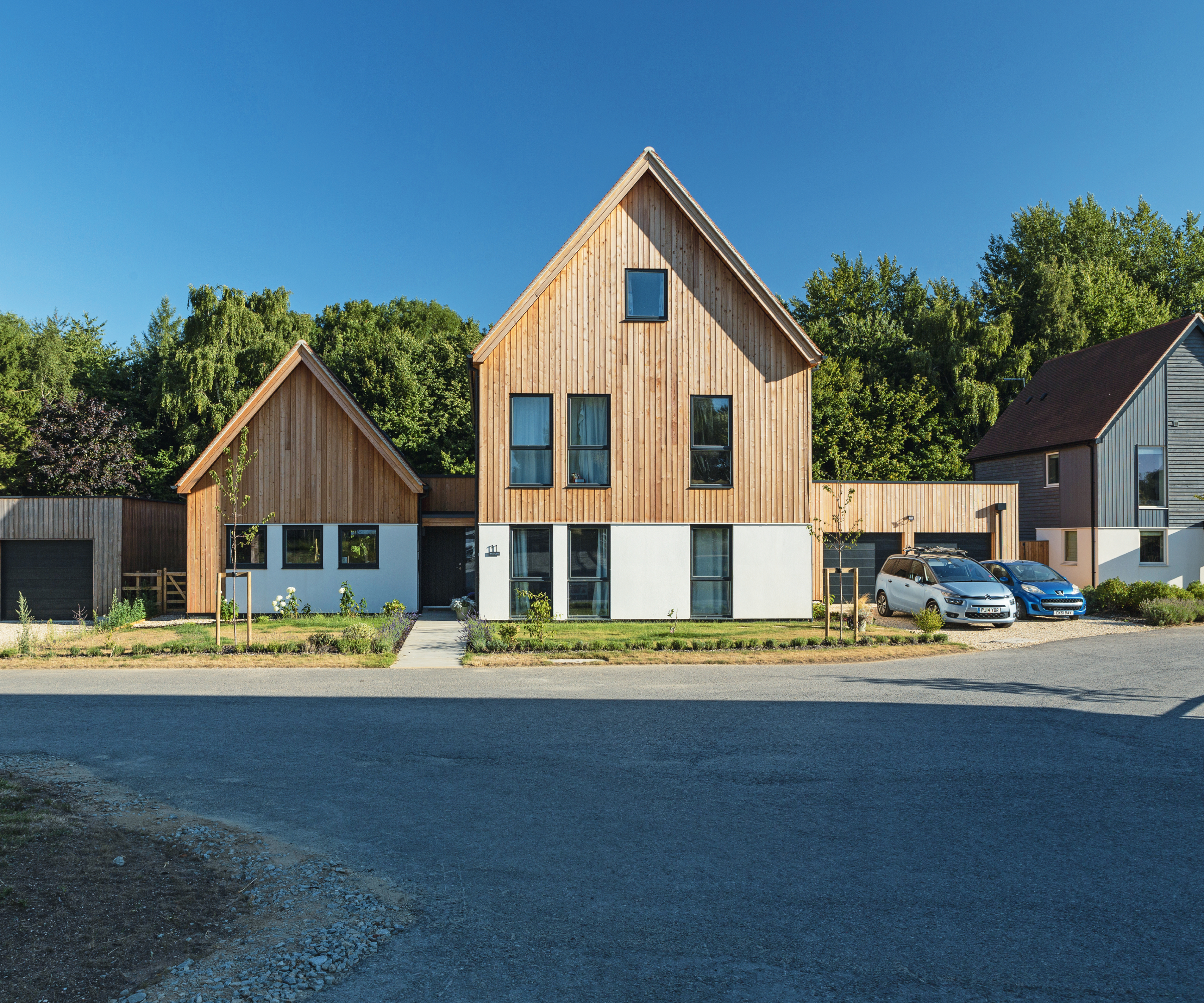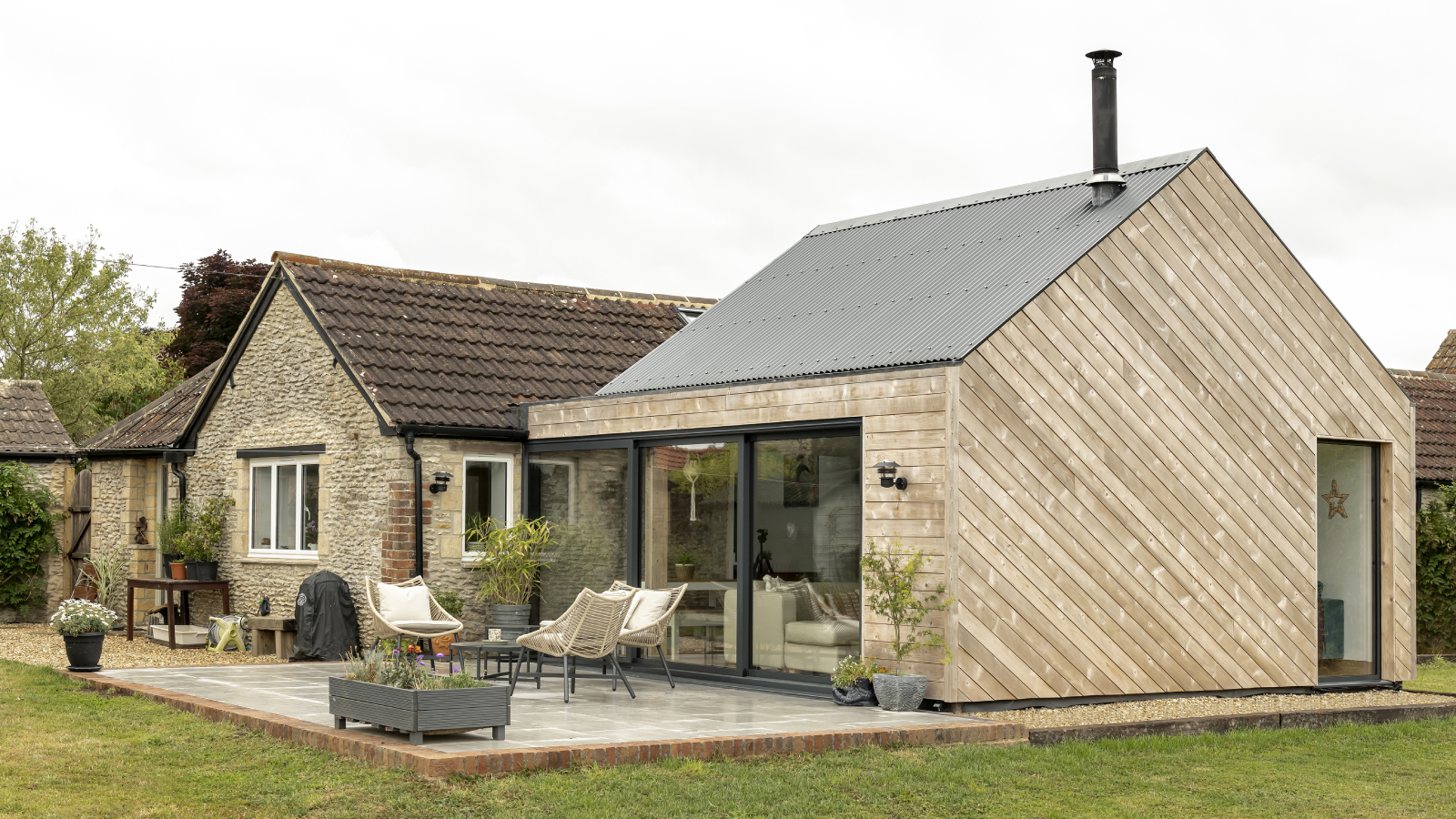What are the rules for planning permission for driveways? Our expert explains
If you’re creating a new driveway or updating an existing one, understanding when you need planning permission for driveways is essential. Here’s everything you need to know

‘Do I need planning permission for driveways’ is a common question from homeowners looking to improve often tight or limited parking conditions in densely populated parking areas across the UK.
But, are the rules the same if you’re looking to transform your front garden into a driveway as they are if you’re simply looking to widen an existing one? Or, perhaps your driveway ideas are being driven by the potential purchase of an electric car meaning you need access to a charging point.
Regardless of your situation, planning expert Simon Rix guides you through the different scenarios surrounding planning permission for driveways, so you can make sure your proposed design is compliant with the rules.
Planning permission for driveways or permitted development?
Whether or not you need planning permission for a driveway will depend on your individual situation. In general, if the driveway is to be part of a new build project, then the details of it should form the 'access' part of the planning application for the new dwelling. This means you won’t require a separate application for your driveway.
If it’s for an existing house, however, then there are some instances where planning permission for driveways is not needed because it comes under permitted development. This means that planning permission is deemed to have already been given, so your driveway project can proceed unencumbered.
But be careful, there are various circumstances where Permitted Development rights don’t apply. It’s always best to check first, because if you go ahead and do the work and then find out you should have applied for planning permission, you may have to complete a retrospective planning application, which comes with its own risks and costs.
When does permitted development not apply to driveways?
Although it can be possible to use permitted development rights (PDR) instead of planning permission for driveways, there are several situations when you will need to seek full approval.
Bring your dream home to life with expert advice, how to guides and design inspiration. Sign up for our newsletter and get two free tickets to a Homebuilding & Renovating Show near you.
- Adding a driveway to a flat or maisonette: PDR for most types of home improvements, including driveways, do not apply to flats and maisonettes.
- Homes that have been converted via PDR: If your home was turned into a dwelling using PDR i.e., those converted from launderettes, betting offices, payday loan shops, hot food takeaways, other commercial, business and service offices, storage or distribution centres, amusement arcades, casinos, agricultural buildings, and premises in light industrial use, then you will need to obtain planning permission for driveways.
- Removed PDR conditions: If the planning permission used for an existing house specifically removed PDR as one or more of the conditions of consent, they do not apply here, either.
- PDR removed across the area: There are some areas of the country where PDR have been removed across the board for all properties in a defined area. If any of these exclusions apply to your house, then you will need planning permission for driveways.
- Listed buildings: If you live in a building that is listed, then you will need planning and listed building consent before making any modifications, because the land around a listed building is covered by the listing protection as well as the property itself.

Converting a front garden into a driveway
Although there are circumstances when you can replace or install a new hard surface in front of an existing house without obtaining planning permission, there are conditions in place that you must adhere to.
To change the area without planning permission, it must be less than five square metres. For some small front gardens, this will be enough for a 'wheel tracks driveway', i.e., one that has just two paved tracks where the wheels of your vehicle go.
If you require a driveway larger than that, then you can still avoid the need for planning permission by laying a permeable (or porous) surface, such as gravel, permeable concrete block paving, or porous asphalt. However, the rules around permeable surfacing must be followed and stem from amendments to the General Permitted Development Order (GPDO) 2008, which introduced specific controls in response to flooding concerns.
This means that when using a permeable surface, the surface water must still be directed to a nearby lawn or flower border to drain naturally. If it can’t, or you want to install a non-permeable material, you will also need to include a soakaway for driveways too.

Don’t forget the matter of dropped kerbs
Another part of your driveway design that will need careful consideration is the matter of how you will access it from the road.
If you are converting some or all of a front garden into a driveway, then you will probably need to drive over a pavement to get to it from the road, in which case you will almost certainly require a licence and/or planning permission for dropped kerbs from your local authority.
It’s important to understand that planning permission for driveways and the highway consent required for creating or widening a dropped kerb are two separate matters. Many homeowners confuse the two, but it’s your local highways department that handles dropped kerb permissions, not planning.
Why Article 4 and homes in conservation areas might require planning permission
Many urban local authorities are increasingly using Article 4 Directions to remove PD rights for front gardens, especially in conservation areas. These often target alterations that may affect streetscape character, including hardstanding and access points.
Subsequently, the best advice is always to speak to your local planning department to discuss your plans before you proceed with any work.
What are the regulations for widening an existing driveway?
If the driveway is in front of your house, i.e., between the road and the principal elevation of your property, then you will still need planning permission to widen it if you are proposing more than five square metres of traditional, impermeable driveway that does not allow water to run into a permeable area, like a lawn or flower border.
If it’s on land other than your front garden, i.e., not between your principal elevation and the road, then there will most likely be no restrictions to the type of driveway area you can cover using impermeable hard surfaces. Providing that they are at, or near, ground level, you should be clear to undertake this project without requiring planning permission for driveways.
Do remember, though, that what you consider to be the principal elevation of your house may not be the same as the view of the local authority.
The principal elevation of a house is defined by the local planning authority and is typically defined as being the part of the house facing a road, or containing the main entrance. In some instances, existing plans or precedent decisions will be needed for confirmation. It may be wise to get advice from a planning consultant on this, especially if you live on a bend, or the orientation of your house in relation to the road is not standard.

Applying for planning permission for driveways
When it comes to obtaining planning permission for driveways, the application process for one connected to an existing house, is via the householder applications route.
The new householder application fees are £262 which is the fee for works within/along the boundary of an existing dwelling house (excluding flats).
You will need to pay the money to your your local planning authority to submit the application, plus whatever your planning consultant charges you for their time and expertise to prepare it. It's very important that you factor in these additional driveway costs before undertaking your project.
If you want to do the application yourself, start by going to the website of your local planning authority.
You probably won’t get a site visit from the council at the moment, but the process is still likely to take at least eight weeks, and may be considerably longer in some areas where there is a backlog.
Allocating plenty of time and budget to receiving planning permission for a driveway will help ensure your project is compliant right from the start, meaning you can then focus solely on creating the outside parking area you've always wanted.
Planning permission for driveways and new homes
Although you will not need to submit a separate application for a driveway, your new self build home may be in the garden of an existing house for example. In this situation, you may wish to share some or all of the existing driveway and access point to the road.
Alternatively, your new build plot may not include any existing access point or driveway. Either way, you will need to clearly show what you want to do as part of the detailed planning application for your new house, but it can form part of the main plans.
In this instance, you or your planning consultant should specify the layout and materials you want to use in the planning application, which will consist of the application form, the block/site layout plan, and the design and access statement.
Careful consideration must also be given to visibility splays and rainwater drainage when seeking planning permission for driveways in new builds.
In terms of rainwater drainage, it’s the same guidance as when converting a front garden into a driveway and you would be well advised to avoid any unnecessary complications by choosing materials that allow rainwater to just drain through them into the earth below.
Although more well known types of driveway materials include gravel and cobblestones, there are also permeable versions of concrete block paving or porous asphalt that can be used.
FAQs
Will I need any approval to install an EV charging point?
It’s worth noting that installing a charging point may have its own planning implications – particularly for listed buildings or homes in conservation areas. Even where driveways are permitted, a standalone EV charger unit may still require consent in such locations.
If as part of your external works you’re still keen to include an element of green space, onsider these front garden driveway ideas that can help you get the most out of your outdoor area as well as turning it into an accessible, practical parking area. Or, if space is tight, explore whether a rotating driveway could provide a solution.
Simon Rix is a professional planning consultant, who began his career working in local government in the 1990s. He was a council officer and later an elected councillor, so he knows how the planning system works from both sides. He went on to set up Planix.UK Planning Consultants Ltd; a consultancy company that advises self builders, home extenders and those taking on small to medium-sized building projects on planning permission.
- Sarah HarleyAssistant Editor

